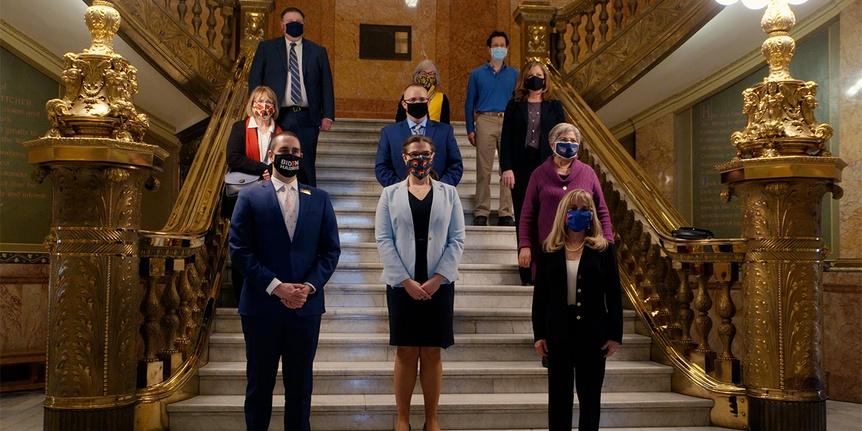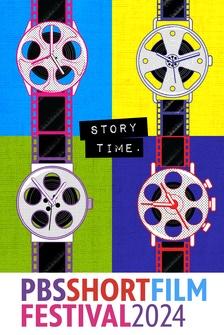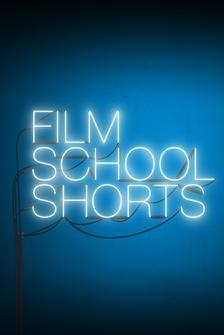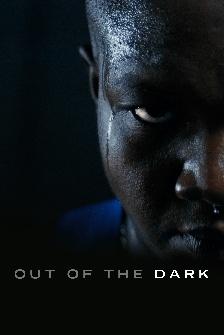-I first saw Greg's work when some very close friends of mine... [ Pencil scratching ] ...told me about going to an opening for this artist who is a cousin of their friend, Dorothy Frisch.
The immediate thought on walking into the gallery that was showing his work was that, "Oh, I wish I had gotten here first."
[ Typewriter scrolls, dings ] What I've always appreciated about Greg's vision for his own artwork is the wonderful breadth of subject matter.
I think people are just drawn to the objects, and they're not all predictable.
I really -- I really love that about him.
[ Pencil scratching ] -[Speaking rapidly ] I've done the world firecrackers.
I'm doing a monster firecracker stand, is what I'm doing.
[ Chuckles ] Yeah, I just love those Atomic Wings that my dad and grandma -- When I was a young kid, I just loved watching them go about 200 feet into the air with a big bang!
[ Laughs ] [ Imitates fuse hissing ] [ Rattles lips ] Bang!
[ Laughs ] Ah-boom!
[ Laughs ] Rrr, rrr, rrrrrrh!
Grr, grr!
Rrr!
I love my set of colored grizzly drawing.
That's one of the best wild animals I've drawn.
And those are the northern U.S. region boats.
[ Imitating engine ] Bem-bem-bem-bem-bem-bem!
Beh-bam-bam-baaaaaaam!
Sound of those aces with the tuning stacks.
What do you think of that?
-They're loud, Greg.
They are very loud.
♪♪ My name is Dorothy Frisch.
I am the youngest of Gregory Blackstock's cousins.
Because I was single and because I was nearby, his mom really, really wanted me... to become actively involved in, um... kind of looking out for Greg -- something that I resisted very, very strongly for quite a long time.
[ Pencil scratching ] ♪♪ I did not want to have the responsibility of taking care of a relative that had a condition that, at that time, no one was really clear what it was.
Looking back, of course, it's classic autism.
-I'm autistic.
I don't much what -- I'm autistic.
I don't know what much to say.
[ Laughs ] -At that time, Greg was working at... -Washington Athletic Club.
I worked as a pot and dish room steward, and, damn it, I just got fed up, always having to work!
I never got any freedom or anything.
-I've started to think that his art is a big communication tool for him.
He's got something in his head.
He wants it out.
He wants it out there in the world.
-Lion, cougar, tiger, and jaguar, especially.
Lots of great big, hungry killers -- wildcats.
Love drawing 'em.
[ Laughs ] -Bear in mind, much of what I know about Greg, I have to piece together.
He's unable to tell me large parts about his background.
And I wasn't present.
-I was ten years old in 1956.
That's when I was enrolled at Devereux in California, 'cause it was a place where kids learned how to work and grow up and how to earn a living.
That's what school was for, and they were -- Ooh, they were tough about insubordination and real strict about disobedience.
Not gonna let anybody get out of line down there.
[ Laughs ] Had a wet towel used them, and they had -- We'd get our mouths washed out with soap, and when I got paddled, they'd use a switch on me.
I hated that!
Mother especially couldn't reach me.
Well, 'cause I wanted to be home.
[ Pencil scratching ] ♪♪ You know, what often happens with artists who have kind of extraordinary stories is that people can attach themselves to the stories as much as they attach themselves to the artwork.
I have to say, I'm much more interested in featuring Greg's artwork than Greg's story... because I'm interested in not qualifying the difference.
Because the difference is external.
It's superficial, in a great many ways.
The circumstance doesn't make him a better artist or even a good artist.
It's just the circumstance.
♪♪ -He worked for 25 years, but he essentially worked for minimum wage.
And so, he retired with a union pension.
Unfortunately, his financial adviser was convicted of stealing all of her clients' money, and Greg was a victim of of her.
He would have just plain run out of money, and he could so easily be homeless.
♪♪ So, I was very, very worried about money for him.
And he would always send to me either reproductions of his art or the actual newsletter from the Washington Athletic Club.
And one day, I had my neighbor -- who I don't think had ever been in my house before -- was over when I got the mail, and I said, "Oh, look.
Here's what my cousin draws."
And this fellow was also an artist.
And he said, "Oh, wow!
This is great stuff!
There's a name for this and a big market called outsider art.
And I said, "Well, that's just crazy."
-Outsider art is a number of classifications for artists who essentially live outside the norm of the rest of us.
But it's always that "us and them" dynamic that I kind of don't like.
I prefer to think of artists like Gregory who are simply self-taught as being just one other aspect of contemporary art.
In their case, as is the case of many artists, simply not people who go through the typical academic training to become artists.
They become artists because they are artists.
Gregory is a perfect example of the artist who makes his work solely to please himself.
♪♪ -So, I looked up and found an outsider art gallery in Seattle.
I put together a cover letter, a packet of everything I could find that I had saved from Gregory, and I sent it to them.
And I didn't hear anything.
[ Wood block knocking ] ♪♪ [ Pencil scratching ] ♪♪ And months and months and months and months later, they called.
They had to see me.
They had to see Greg.
They had found that manila envelope behind a file cabinet and didn't know it was there until they moved.
And then, they opened this up.
[ Laughing ] And they were so excited, So, I had not told Greg I had done this, and now I was really worried, because, gyugh.
[ Laughs ] So, we went over to meet him.
♪♪ [ Smooching ] ♪♪ So, he brought out rolled-up, bent... [ Paper rustling ] ...roll after roll after roll of hundreds of drawings.
♪♪ ♪♪ And they were almost in tears.
[ Laughs ] [ Laughs ] So, that was November of 2003.
His first solo art show was February of 2004, and it was very well received by the public.
Very nice press.
And then, somebody who also came to that show said, "I think there's a book here."
[ Laughs ] My head was reeling.
And so, a book of his artwork was published called "Blackstock's Collections."
And that has sold worldwide and is in libraries worldwide.
And it was like, "This is so cool."
♪♪ And then, people started collecting his work from around the world.
-Fame!
[ Laughs ] My world fame.
[ Chuckles ] Los Angeles customer bought that one along with the safety signs of Yellowstone or somethin'.
And the Collection de l'Art Brut in Lausanne, Switzerland, wanted to do a show about Greg featuring his work.
There were posters up throughout the town about his work.
The taxi driver said, "You're Blackstock?!"
-Yeah, my world fame.
[ Chuckles ] Getting me into world famous artistry is the main thing.
[ Chuckles ] Get away from drudgery.
I'm not gonna have to -- That food/beverage business, having to do drudgery all time.
[ Chuckles ] -To my mind, Gregory is living in the world with the rest of us.
He just sees it a little differently than many of us do.
Once, he came into the gallery during a first Thursday when we had another artist showing in the front room, and his work was in the back.
And I introduced him to this very well-known artist and someone who's very serious about their work.
And I said, "Gregory, this is so-and-so.
This is their work in the front room."
Gregory looked around the room and... ...he looked back at me, and he says, "Well, I like mine better."
[ Laughing ] And, you know...
I loved that moment.
It was -- -World's best.
[ Playing "Stars and Stripes Forever" on accordion ] [ Whistling in tune ] ♪♪ You know that one, too, huh?
-"Stars and Stripes Forever."
-That's the best John Philip Sousa march I ever heard.
-It's a good one.









